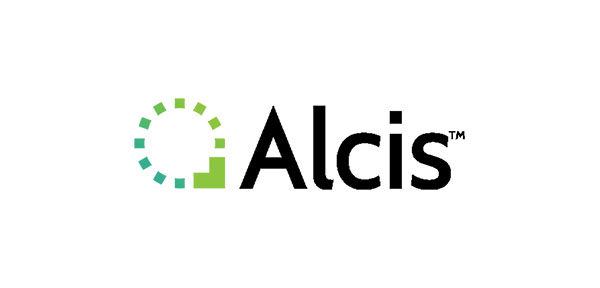How Deep Learning is helping the world’s most vulnerable people
As the number of Internally Displaced People (IDPs) continues to increase, humanitarian aid organisations are looking for more effective ways to support the most vulnerable people in the world. In Afghanistan, the Norwegian Refugee Council (NRC) needed to find a better technique to analyse the number, flow and concentrations of humanitarian shelters. By integrating Deep Learning with ArcGIS, Alcis developed a tent-counting methodology to give the NRC the knowledge and insight required to make more informed decisions around the delivery of emergency aid to IDPs.
Powerful visualisations help decision makers make better decisions
Out-of-the-box advanced spatial analytics can be quickly deployed
Users deliver more accurate results, with greater ease and efficiency
The Challenge
In Afghanistan there are more than 2.5million Internally Displaced People (IDPs) who have been forced to flee their own homes, in their own country, because of conflict, violence, persecution, human rights violations as well as natural emergencies including drought. Many end up in tented camps, often in areas that are difficult for aid agencies to reach, with nothing to show but the clothes on their backs. For this reason, the UN describes IDPs as “amongst the most vulnerable in the world.”
Making assumptions based on data by counting tents, is one way of helping the humanitarian community to monitor the movement of IDPs and identify and deliver the help they need. But the rapid development of tented camps and the high rate of change within them makes manual counting inefficient.
The Norwegian Refugee Council (NRC) provides vital humanitarian aid across 31 countries. Initially, in Afghanistan, they did not have a clear view of the number of IPDs in tented camps. It therefore became imperative to find a more efficient methodology of counting tents and estimating IDP numbers, to help the NRC to deliver the timely and appropriate humanitarian support required.
“Esri tools and software help visualise data in such a compelling way, it’s easy for lay people to understand. There are no language barriers to 3D maps, and there’s no need to read through 500-page reports. Presenting data in such a captivating way simply drives more informed and timely decision-making.”
Alison Hall MBE, Charity Founder, Seeds for Development
The Solution
Alcis has worked in Afghanistan since 2004, using GIS and spatial analysis combined with satellite imagery to help aid organisations and NGOs, amongst others, to identify the most effective policies in order to implement appropriate programmes, that create lasting and positive outcomes in fragile and complex environments.
An initial project involved Alcis tracking monthly rainfall and looking at impacted agricultural areas and the greatest impact on the population, from the developing drought. The 2017 drought led to the displacement of more than 250,000 people who ended up in IDP camps. Given the lack of available data on the ground as to the distribution and volumes of IDPs in camps, NRC asked Alcis to help find a solution for tent counting.
Alcis recognised that using satellite imagery and GIS data could provide a better method than manual counting. Satellite data was acquired of selected sites, providing a clear picture of what was happening on the ground and a baseline from which to determine the optimal approach to counting the tents. This initial methodology, while enjoying some success, did not deliver the acceptable standard hoped for.
This led to a Deep Learning approach which utilised a heavily specialised Neural Network. In the absence of a pre-trained model, Alcis employed the Deep Learning tools within ArcGIS Pro to train an image segmentation model capable of identifying the unique signature of each tent outline.
The algorithm was run against satellite imagery achieving predictions circa 99%, with very few false positives. The corresponding results were converted into a feature layer so this could be overlaid onto imagery and visualised within a 3D scene.
“Using this Deep Learning approach with Esri ArcGIS software has helped people from multiple backgrounds, with multiple languages, to help make the best decisions to support the most vulnerable people in the world.”
Tim Buckley, Chief Operating Officer, Alcis
Benefits
Power of visualisation
Taking multiple, complex data sets and visualising them into 3D interactive apps appeals to even the most non-technical of individuals, quickly communicating the scale of a humanitarian aid emergency on the ground. Decision-makers can then make more insightful decisions based on identified IDP numbers, rather than from ad-hoc surveys in the field.
Out-of-the-box solution
The end-to-end Deep Learning workflow available in ArcGIS Pro 2.5 (onwards), gives users access to unrivalled geoprocessing tools, supported by richer visualisation capabilities including tables, images and charts. Extruding locations in 3D and attributing columns of different lengths to visually represent variability in the data, highlight critical findings such as the impact on local populations by drought.
Speed of delivery
ArcGIS Pro delivers much faster results, requiring minimal post-processing, and is considerably easier to use than a bespoke neural network without significantly reducing the accuracy of the results. It only takes a few lines of code to do the whole training, compared to numerous lines using the traditional workflow. There is no need to develop an app for exporting training datasets and no post processing such as Georeferencing is required.
Advanced analysis
Spatial analysis can now be undertaken at much higher levels using Deep Learning tools. For the NRC this meant, in one location, identifying 6,535 tents believed to be temporary homes for over 30,700 displaced people. This invaluable information helps provide the humanitarian aid needed on the ground, more quickly and efficiently, allowing the NRC to improve the lives of those who need help the most.



